|
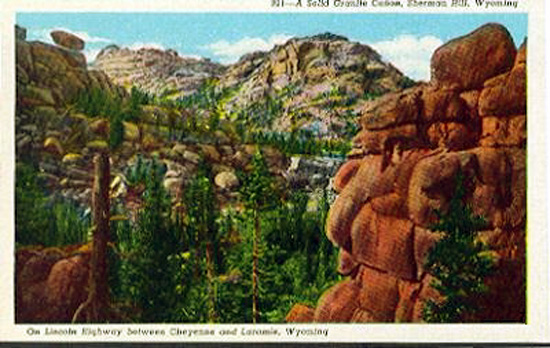
Granite Canyon, Happy Jack, approx. 1910.
With the growth of Cheyenne, the issue of the City's need for water came front and center.
In 1882, the Territorial Legislature authorized the creation of a water system in Cheyenne.
Five years later, the Territorial Legislature authorized Cheyenne to issue bonds for the construction of a
water system. In 1888, the City began obtaining of allocations of water from Crow Creek. Originally, the
City obtained its water about six miles up the creek from the City, about three miles west of Ft D. A. Russell. The
City's appetite for water, however, continued to grow.
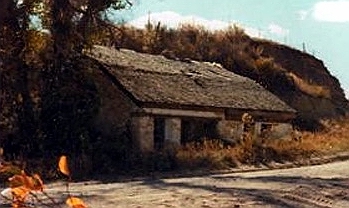 Ruins of Simmons homestead, undated. Ferguson Archives.
Ruins of Simmons homestead, undated. Ferguson Archives.
By 1910, the City began the acquisition of lands for the
cvonstruction of reservoirs further west along Middle Crow Creek on lands owned by Mary Edwards, widow of Hugh Edwards and her son, Charles Lawrence.
Part of the land to be acquired were leased to William Ferguson. Mrs. Edwards contended that the
properties were underlaid by "rich and vast deposits of gold, silver, and copper ore
of high grade and of the fair and reasonable value of $50,000." But by that time the bloom was off the mining
boom. The contention was rejected as "speculative," the Supreme Court noting:
With reference to the alleged value of mineral ore underneath the surface, even less ground is presented
for the charge that it was excluded through passion and prejudice of the appraisers. there is no
averment to show that anything had been done toward prospecting or developing the alleged mineral
resources of the land, or that it was adjoined or was in the nieghborhood of a mine or
mines producing such minerals. It is a matter of common knowledge that the value of
land as dependent upon mineral bearing ore beneath the surface is entirely speculative, without
development sufficient to demonstrate in a reasonable degree the situation, character, and
quanitity of such ore, and the necessary expense attendant upon bring the
same to the surface and extracting the metals therefrom. The location of the land
with reference to transportation facilities may also have an important bearing
on the question. Edwards v. City of Cheyenne, 19 Wyo. 110, 114 P. 677 (1911).
Mrs. Edwards and her son received $4,200.00. See Watts v. Lawrence, 26 Wyo. 367, 185 P. 719 (1919), and the reservoirs were built.
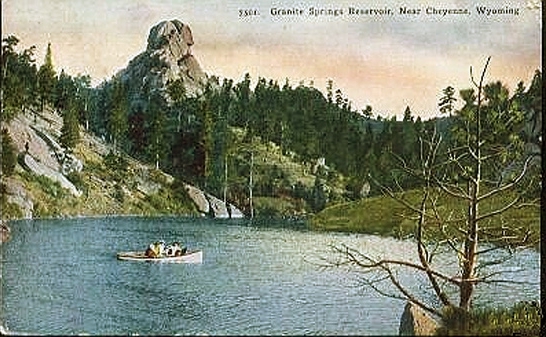
Granite Springs Reservoir, Happy Jack, approx. 1920.
Thus, the old Edwards and Ferguson Homesteads fell beneath the waters of the reservoirs. But the impact was more.
Downstream, Thomas Holt complained mightily but to no avail. The new reservoirs were located further upstream
than before. The City proceeded to construct a pipeline to the City, sucking all the water out of the
creek. Holt lost his hay crop for 1910 and 1911 and had insufficient water for his herds. If anyone has viewed the trickle
that now flows in Crow Creek where it crosses below I-25, it is hard to believe that the waterway was a cause of
the City's existence. Indeed, it hardly makes for a respectable ditch.
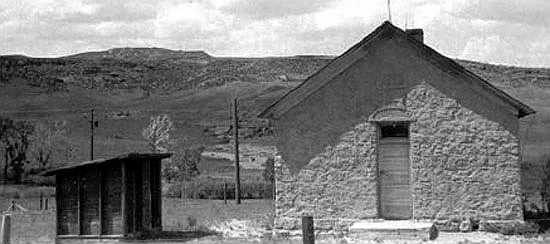
Hecla School, undated. Ferguson archives.
The school is gone now, replaced first by the Happy Jack School, which has since been moved to a park
in Cheyenne, and later by the modern Gilchrist School closer to Cheyenne. All that is left of the
old school is the two room privy visible behind the school in the above photo.
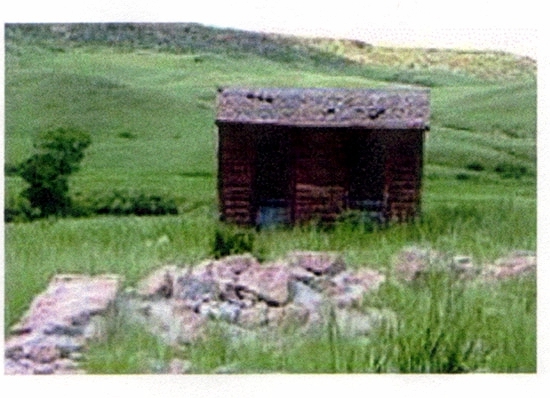
Hecla School privy, undated. Ferguson archives.
Although the mines are gone and ranching has declined, the area has undergone a revitalization as a center
for recreation. In 1922, Harry P. Hynds constructed a Boy Scout Lodge in the area. The Granite
Springs Reservoir and the Lodge are now the center of the Curt Gowdy State Park, named after the famed sportscaster.
Gowdy, originally from Green River received his start by broadcasting a Cheyenne High School football game and went on to
be the voice of the Red Sox.
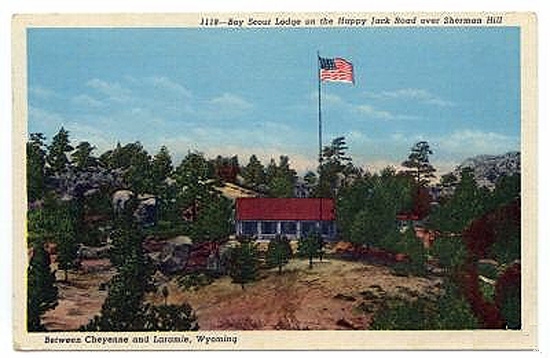
Harry P. Hynds Lodge, Curt Gowdy State Park, Happy Jack, 1920's.
The Lodge is on the National Register. For discussion of H. P. Hynds, see Cheyenne.
Next Page: The USS Wyoming.
|